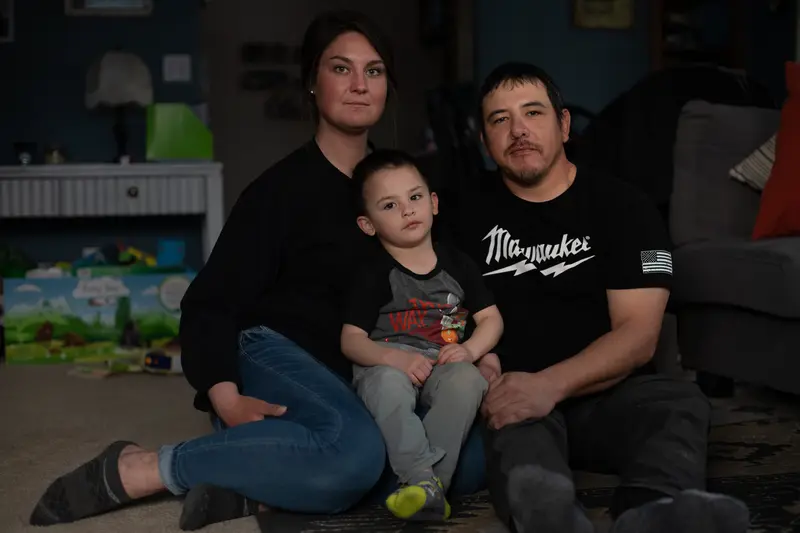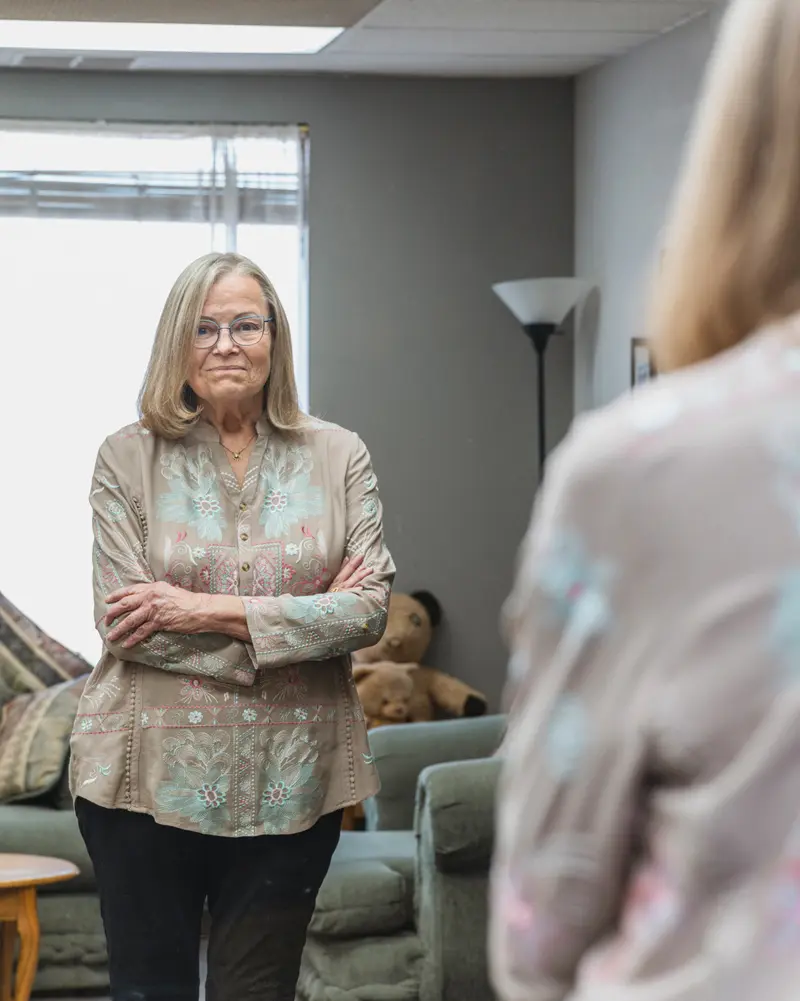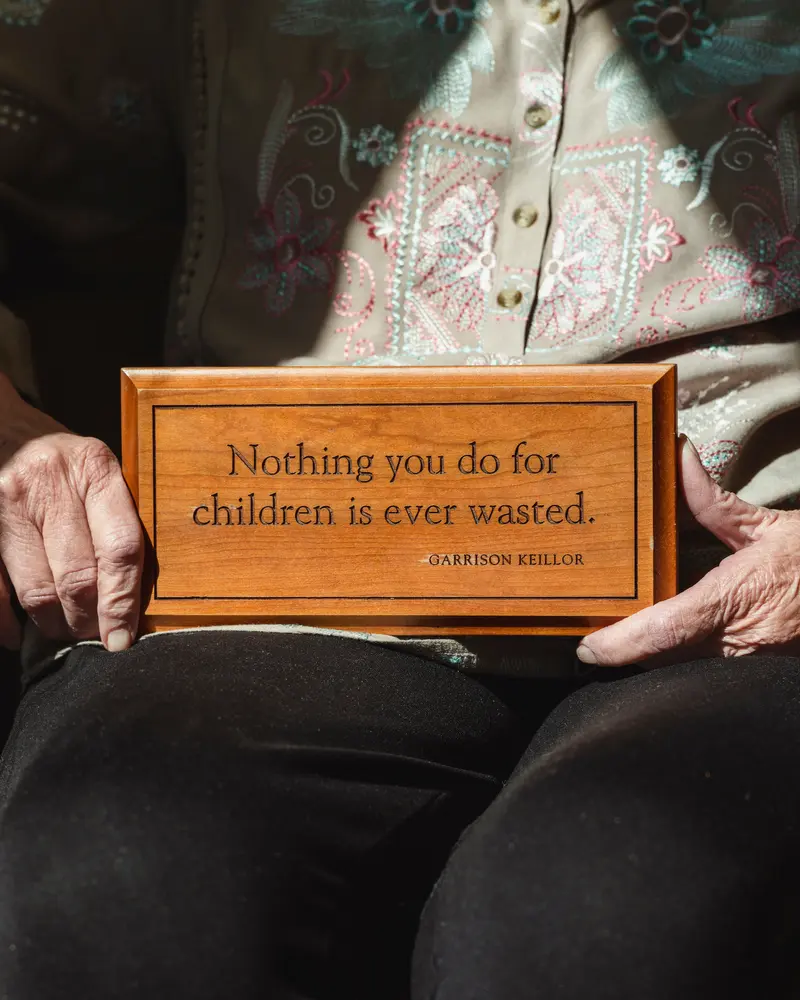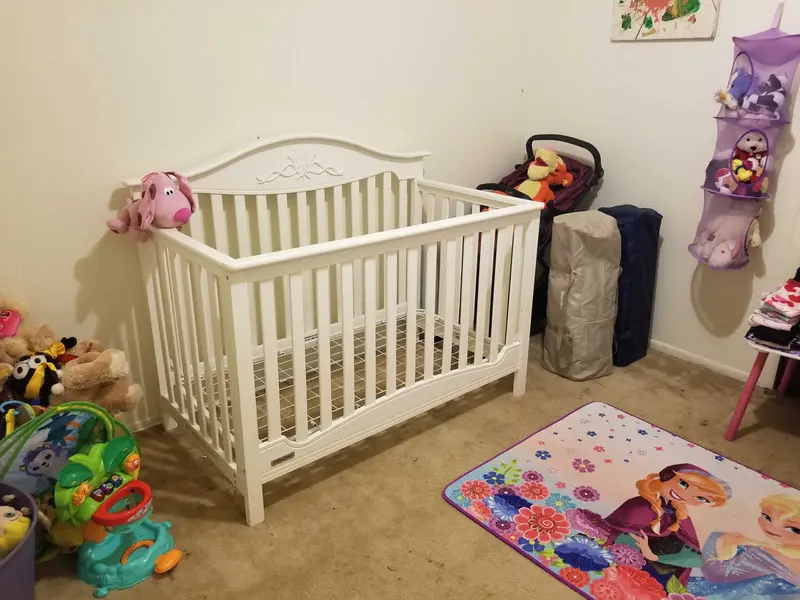Diane Baird had spent four decades evaluating the relationships of poor families with their children. But last May, in a downtown Denver conference room, with lawyers surrounding her and a court reporter transcribing, she was the one under the microscope.
Baird, a social worker and professional expert witness, has routinely advocated in juvenile court cases across Colorado that foster children be adopted by or remain in the custody of their foster parents rather than being reunified with their typically lower-income birth parents or other family members.
In the conference room, Baird was questioned for nine hours by a lawyer representing a birth family in a case out of rural Huerfano County, according to a recently released transcript of the deposition obtained by ProPublica.
Was Baird’s method for evaluating these foster and birth families empirically tested? No, Baird answered: Her method is unpublished and unstandardized, and has remained “pretty much unchanged” since the 1980s. It doesn’t have those “standard validity and reliability things,” she admitted. “It’s not a scientific instrument.”
Who hired and was paying her in the case that she was being deposed about? The foster parents, she answered. They wanted to adopt, she said, and had heard about her from other foster parents.
Had she considered or was she even aware of the cultural background of the birth family and child whom she was recommending permanently separating? (The case involved a baby girl of multiracial heritage.) Baird answered that babies have “never possessed” a cultural identity, and therefore are “not losing anything,” at their age, by being adopted. Although when such children grow up, she acknowledged, they might say to their now-adoptive parents, “Oh, I didn’t know we were related to the, you know, Pima tribe in northern California, or whatever the circumstances are.”
The Pima tribe is located in the Phoenix metropolitan area.
It went on and on like this. Baird acknowledged that her entire basis for recommending that the foster parents keep the baby girl was a single less-than-two-hour observation and interview that she’d conducted with them — her clients. She’d never met the baby girl’s biological grandmother, whom the county child services department had been actively planning for the girl to be placed with, according to internal department emails. Nor had she even read any case documents.
A fundamental goal of foster care, under federal law, is for it to be temporary: to reunify children with their birth parents if it is safe to do so or, second best, to place them with other kin. Extensive social science research has found that kids who grow up with their own families experience less long-term separation trauma, fewer mental health and behavioral problems as adolescents and more of an ultimate sense of belonging to their culture of origin.
But a ProPublica investigation co-published with The New Yorker in October revealed that there is a growing national trend of foster parents undermining the foster system’s premise by “intervening” in family court cases as a way to adopt children. As intervenors, they can file motions and call witnesses to argue that they’ve become too attached to a child for the child to be reunited with their birth family, even if officials have identified a biological family member who is suitable for a safe placement.
A key element of the intervenor strategy, ProPublica found, is hiring an attachment expert like Baird to argue that rupturing the child’s current attachment with his or her foster parents could cause lifelong psychological damage — even though Baird admitted in her deposition that attachment is a nearly inevitable aspect of the foster care model. (Transitions of children back to their birth families are not just possible, they happen every day in the child welfare system.)
As part of our reporting, we reviewed hundreds of pages of Baird’s reports and testimony from cases over the past decade. We also interviewed more than two dozen attorneys, officials, caseworkers, experts and members of foster and birth families who’ve worked with Baird or observed how she implements her methodology, which she has long called the “Kempe Protocol for Interactional Evaluation,” after the Kempe Center at the University of Colorado, the nation’s leading academic institute focused on child welfare. We found that — leaving aside the question of whether attachment theory should even be used as an argument in these cases — Baird’s assessments of foster children’s relationships aren’t just unscientific. They barely touch the surface of a child’s life.
“I don’t know these children,” she testified in one 2017 case, adding, “I have not met anybody.” Still, she said, she “strongly” recommended that those children’s birth parents’ rights be permanently terminated and that the kids be adopted.
Baird is so consistent in this view that she sometimes copies and pastes from her own past evaluations. In the Huerfano County case, she filed a report saying that the baby girl’s life with her foster parents was “predictable, safe, and filled with love”; that removing her from them and placing her with her biological grandma — with whom the girl had been having regular, joyful visits — would “derail her healthy development and create lifelong risk”; and that her “healthy development and mental health will be best protected if her current caregiving environment does not change.”
That same month, Baird filed a report in a Weld County case saying that a baby boy’s life with his foster parents was “predictable, safe, and filled with love”; that removing him from them and placing him with his biological grandmother — who too was regularly visiting him with the support of the county child services department, but whom Baird had never met — would “derail his healthy development and create lifelong risk”; and that his “healthy development and mental health will be best protected if his current caregiving environment does not change.”
Baird, in an interview with ProPublica, admitted that “I do sometimes use the same verbiage in one report as I did in others.” But, she added in an email, “My consistency is not a boiler-plate approach, but rather reflects developmental science which applies to all children.”
She emphasized, “In all cases I advocate for what I am convinced is the child’s best interest.”
Baird also noted that in many cases she is hired by county officials, rather than directly by foster parents, although ProPublica’s interviews and review of records show that this typically happens when officials are in agreement with the foster parents that they should get continuing or permanent custody.
Baird, despite not being a child psychologist, achieves credibility with these officials — and with judges — in part via the impressive label that she uses for her methodology: the Kempe Protocol.
“Don’t Believe It Is Our Place to Get Involved”
The University of Colorado’s Kempe Center, widely considered the birthplace of the modern U.S. child welfare system, is where this all began.
Baird developed the Kempe Protocol, alongside colleagues, while working at Kempe in the 1980s and ’90s. She continually used the method both as an employee of the center and after entering private practice in 2017.
Founded in the 1970s, the Kempe Center is best known for getting laws passed across the country requiring “mandated reporters” like teachers and police officers to call in any suspicion of child abuse or neglect to a state hotline — after which kids were to be removed from their families, into foster care, if there was evidence of maltreatment. “No organization,” said Marty Guggenheim, the founder of the nation’s indigent family defense movement, “played a more direct role in shaping the modern system of surveillance, over-reporting, and under-emphasizing of the harms associated with state intervention.”
But in recent years, Kempe has taken a more critical look at its past, accepting some institutional responsibility for what it has called the “myth of benevolence”: the idea that certain kids should be redistributed from their families to (often better-off) foster and adoptive parents. The center recently released a statement saying that it had participated in ignoring poverty by placing sole responsibility for poor children’s health and well-being on their families’ alleged maltreatment of them. The statement acknowledged the center’s “complicity” in its “generation-spanning impacts.”
The center even invited Dorothy Roberts, a law professor and sociologist at the University of Pennsylvania who is a leader of the movement to abolish the child welfare system because of its widespread surveillance and separation of Black families in particular, to be a keynote speaker at a recent conference.
Yet when attorneys for poor birth families wrote to Kempe in late 2022 saying that Baird and experts she has trained “are doing real damage to families, and they are doing damage in the name of the Kempe Center,” a University of Colorado lawyer responded by declining the advocates’ request that the center “publicly disavow this protocol and correct the record.” The reason, the lawyer said, was that the judge or jury on a particular case “is in the best position to evaluate arguments raised by involved parties” as to the scientific efficacy of the method. The lawyer added that the center has “worked with hundreds of individuals in its 50-year history in the child welfare arena and we have little ability to control testimony of each individual.”
This response was far from satisfying to some of the Kempe Center’s own faculty, according to interviews with people who work there and internal emails obtained through a Colorado Open Records Act request. “When the Kempe Center was given the opportunity to do the right thing,” wrote one pediatrics professor who has been at Kempe for more than a decade, “it hid behind its legal counsel.”

Credit:
Rachel Woolf for ProPublica
After ProPublica published the article with The New Yorker documenting Baird’s role in the trend of foster parents “intervening” in family court cases, faculty at Kempe started organizing a discussion around our reporting and sought an organizationwide reckoning with our findings. “It was a gut punch to read this,” wrote another professor. “This is likely the most widely distributed reference to the Kempe Center that we’ve seen in the past decade or more.” The tragedy, the professor said, “is that it diminishes all of the good work we have and continue to do for kids and families.” (ProPublica is not naming the Kempe faculty and staff who wrote these emails because several asked not to be named, saying that they were fearful of retaliation by leadership or a negative effect on their academic standing.)
Still another staffer wrote that past cases of hers similar to the one we wrote about “continue to haunt me.”
More emails called Baird’s method a “bogus Kempe protocol” and “junk science” used “to rip apart families.” She is “leveraging the Kempe name to bolster her opinion.”
Even amid this outcry, Dr. Kathryn Wells, the Kempe Center’s executive director, gave a lawyerly explanation to her staff. “Yes,” she wrote in an emailed response to them, “a former employee of the Center has used an approach based on attachment theory and named it after the Center, even though there is no such protocol.” The protocol, she said, was named after Baird’s longtime place of employment — Kempe — but “not trademarked nor listed anywhere in the work that the Center provides.”
In a previous email, Wells, who has national influence on child welfare policy and practice, had explained her reasoning for not taking further action, such as sending Baird a cease-and-desist letter. “If the claims in court are not supported in the literature, that is not ours to get involved with as Diane is not an employee and it is a legal issue for the attorneys to battle in court,” Wells wrote. She added, “Don’t believe it is our place to get involved.”
What Is the Kempe Protocol?
One of Baird’s first steps upon taking a new case, according to ProPublica’s review of records and interviews that we conducted, including with Baird herself, is to meet with the foster parents. She observes the bond that they have with their foster child, which she generally compliments, and then talks to them about the child’s birth family. She asks them about the circumstances of the child’s birth and alleged neglect — neither of which foster parents likely would have been present for — and also about how visits with the birth parents or other relatives have been going.
Drawing from the foster parents’ version of events, Baird routinely reports to the county or testifies in court that visits with the birth family have been detrimental to the child, and, accordingly, she recommends that the foster parents keep the child indefinitely or permanently, on the basis of attachment theory. She has called just this amount of evaluation “the Kempe Protocol” in several cases we reviewed.
In some cases, though, Baird does observe a birth family visit. During these evaluations, she often asks the birth parents or family members a litany of personal questions that can be stressful to answer in a formal visitation setting, including, sometimes, ones about their marital history and why they’re attracted to their significant other. All the while, she judges how they’re interacting with their child, looking for “the little nuances” of how babies communicate, she told me. She calls this, too, the Kempe Protocol.
In Baird’s reports and testimony summarizing her observations from such sessions, she has said, for instance, that a little boy and his birth father seeming to be happy around each other (they were playing catch and saying “I love you!” “I love you more!”; the boy “expressed no negative emotion during their time together”) just showed that the dad was too rigidly setting the emotional tone of the relationship.
She also regularly uses terms like “mirror neurons,” “neurotoxins,” “synapses,” “hormones,” and “encoded trauma in the central nervous system” to justify her conclusions about children’s family relationships. (Baird is not a neuroscientist.)
In interviews and emails with ProPublica, Baird said that she is simply opposed, in almost all cases, to rupturing the current healthy attachment of any child under 3 with that child’s foster parents, even if a birth family member is available and family and cultural heritage stand to be lost forever. She said that this is the age when kids are developing their capacity to form healthy relationships, and that they may experience being removed from their foster parents as a rejection, causing a loss of trust going forward. She also said that kids who have a history of caregiver changes and trauma, which is true of many little ones in foster care, need a sense of “permanency,” often meaning adoption.
Baird’s — and Kempe’s — Legacy


Credit:
Trent Davis Bailey for ProPublica
Baird says that she is likely retiring soon, in part as a result of the increasing scrutiny of her practices that she has been facing. In an email to ProPublica, she wrote, “You have been the catalyst for a good bit of self examination,” adding, “Deep soul searching has followed and your process has helped me as I have worked to be honest with myself.”
Yet Baird still shares thoughts and advice about ongoing cases with a coterie of mostly younger experts — what she called in her deposition a “peer supervision and support” group.
“Do you think it’s maybe advisable that others don’t continue to use that protocol given its controversy and the lack of evidence?” she was asked in the deposition.
“I’ll leave that up to them,” she answered.
Several of these experts, according to their resumes, have trained at Kempe, or they have testified or told ProPublica that they’ve learned directly from Baird either at Kempe or in their continuing practice.
“Kempe is such a weighty voice that no judge is going to be like, ‘Oh, Kempe is wrong,’” said Melissa Michaelis Thompson, executive director of the Office of Respondent Parents’ Counsel, Colorado’s public defender agency for indigent birth parents. Thompson said that her attorneys around the state keep seeing versions of the Kempe Protocol being used in their cases.
Wells, the Kempe Center’s executive director, told ProPublica in a statement earlier this month that the use of attachment theory and parent-child interactional assessments, the procedure that Baird conducts with birth families, “in isolation” and “particularly in non-therapeutic settings and without attention to bias,” is “not consistent with current best practices and can be abused by experts.” Wells added that Kempe does not itself currently provide such evaluations for court proceedings or endorse the methodology for that purpose. “Equity is at the heart of our mission,” she said.
Even if the Kempe Center did fully disavow Baird and her cohort’s use of this protocol and practices like it, there would be no clear recourse for all of the birth families who’ve lost their children in the past because of Baird’s work. Still, those families might better know the truth of what happened to them, many of them say.
Stephanie Riggs, the biological grandmother in the Huerfano County case — “huerfano,” ironically, means “orphan” in Spanish — had been doing everything she could to bring her granddaughter back from foster care. She was working nights to be able to travel to visit the baby girl during the day. She’d dug into her limited budget to get a crib, a dresser and baby clothes, bookshelves and baby books, and a play carpet and a toy box. She successfully completed a safety check of her home, case records show. “The grandmother Mrs. Riggs has been committed” to the child “and loves her very much,” the county said in a report.

Credit:
Courtesy of Stephanie Riggs
But then “Diane Baird turned everything upside down,” Riggs said. “I didn’t see how she could be unbiased,” Riggs said of Baird, because the foster parent intervenors were “giving her her paycheck.”
Baird told ProPublica that “who pays me is not a factor in any recommendation in any case.” She also noted that she was found credible as an expert by the judge in this case.
The foster father, when reached by phone, declined to comment, citing his family’s desire for privacy and the fact that the case had been emotionally difficult for all parties.
This past fall, with Baird’s help, the foster parents were granted full custody of the baby girl through her 18th birthday. Some visits may still be allowed in the future, at least by video, but Riggs is unsure if her granddaughter will ever meet her aunts, uncles and cousins, or go to their family reunions, or know their family traditions. Only the crib remains, and it is empty.
Mollie Simon contributed research.

